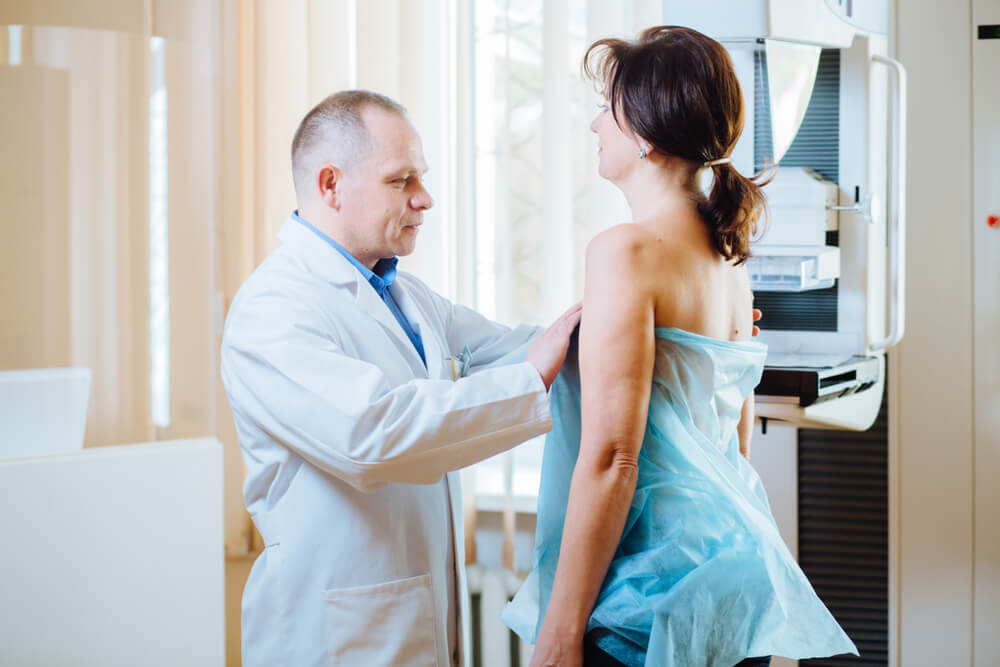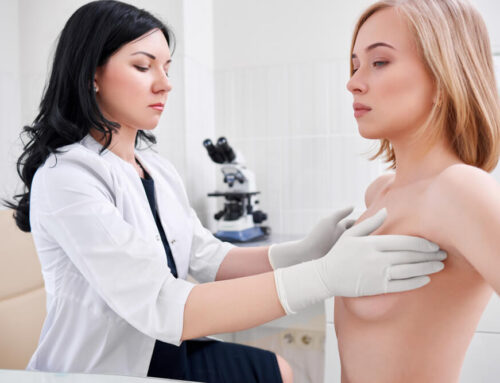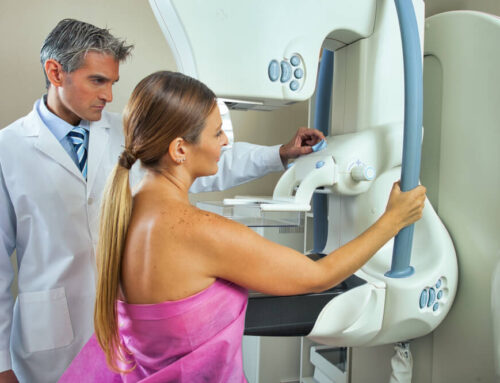As women journey through the natural life transition of menopause, they often encounter a myriad of changes, both physical and emotional. Among these changes, alterations in breast health stand out as a significant aspect of the menopausal experience.
In this blog post, the experts at Breast Care Center Miami will explore the nuances of breast changes during menopause and perimenopause, shedding light on what is typical and offering insights into how to navigate and mitigate these transformations.
Understanding Menopause Breast Changes
Menopause, a natural biological transition typically occurring around the age of 50, represents a significant milestone in a woman’s life. It marks the cessation of menstrual cycles, symbolizing the conclusion of her reproductive years. As the body undergoes this transformative process, hormonal fluctuations become a hallmark of both menopause and its precursor, perimenopause, impacting various aspects, notably the breasts.
Decreased Breast Density
One noteworthy change associated with menopause is a decrease in breast density. This shift is a consequence of hormonal changes, particularly the decline in estrogen levels. As estrogen plays a vital role in maintaining the proportion of glandular tissue, its reduction results in softer and less firm breasts. This decrease in density is often palpable during self-examinations and routine breast checks.
Loss of Elasticity
The diminishing levels of estrogen during menopause contribute to a reduction in collagen and elastin, essential proteins that provide structural support and elasticity to the skin. This decline in elasticity manifests in the breasts, leading to sagging or changes in shape. The loss of skin firmness is a common aspect of menopause-related breast transformations, and women may notice these changes over time.
Changes in Size
Hormonal fluctuations during menopause can exert an influence on breast size. Some women may experience a decrease in breast size due to the reduction in glandular tissue, resulting in a subtle or more noticeable change. Conversely, others may notice an increase in size, often attributed to factors such as weight gain or hormonal fluctuations. These variations in size contribute to the uniqueness of each woman’s menopausal experience.
Increased Sensitivity
Hormonal imbalances during menopause can give rise to increased breast sensitivity or tenderness. Estrogen fluctuations, in particular, can affect the breast tissue’s responsiveness, making them more sensitive to touch or discomfort. While this heightened sensitivity may be uncomfortable for some women, it is generally regarded as a normal part of the hormonal transition and tends to subside as the body adjusts to its new hormonal balance.
In essence, understanding menopause-related breast changes involves recognizing the intricate interplay of hormonal dynamics within the body. These changes are not uniform, and individual experiences may vary. Embracing these transformations as a natural part of the aging process and adopting proactive measures to promote breast health ensures a comprehensive approach to well-being during this life stage. Regular self-examinations, open communication with healthcare professionals, and a commitment to overall health contribute to a positive and empowered menopausal journey.

Mitigating Breast Changes With Menopause
Navigating menopause-related breast changes involves proactive measures that empower women to prioritize their breast health. While these transformations are a natural facet of the aging process, adopting a proactive approach can contribute to overall well-being. Here are key strategies to mitigate menopause-related breast changes:
Regular Breast Self-Exams
Conducting regular breast self-exams is a fundamental aspect of proactive breast health. By familiarizing yourself with the normal look and feel of your breasts, you become attuned to any deviations that may indicate abnormalities. Performing these self-exams on a consistent basis facilitates early detection, allowing for prompt medical attention if any changes are identified. Empowerment through self-awareness is a cornerstone of maintaining breast health during menopause.
Maintain a Healthy Lifestyle
Adopting and maintaining a healthy lifestyle is pivotal in promoting overall health, including breast health during menopause. A balanced diet rich in nutrients supports the body’s physiological processes, while regular exercise contributes to cardiovascular health and overall well-being. These lifestyle choices can positively impact hormonal balance and mitigate the impact of menopausal changes on breast health.
Wear Supportive Bras
Investing in well-fitted, supportive bras is an often-overlooked yet crucial aspect of mitigating discomfort associated with changes in breast shape and size during menopause. Supportive bras help reduce strain on breast tissue, providing comfort and minimizing the physical impact of hormonal fluctuations. By prioritizing proper support, women can enhance their overall breast health and well-being.
Consult with a Healthcare Professional
Regular check-ups with a healthcare professional are paramount during menopause. Scheduling routine appointments allows for comprehensive assessments of breast health and provides an opportunity to discuss any concerns or changes. Open communication with healthcare providers ensures that women receive appropriate guidance, evaluation, and personalized recommendations based on their individual health history.
Understanding the typical breast changes that occur after menopause is a nuanced exploration, as individual experiences can vary widely. It’s crucial to appreciate that menopause is a highly individualized journey, and the alterations in breast health are influenced by a multitude of factors, including genetics, lifestyle, and overall health.
Which Breast Change is Typical After Menopause?
Decrease in Breast Size and Density
For some women, menopause may usher in a decrease in breast size and density. This change is often associated with the reduction in estrogen levels, which plays a crucial role in maintaining the glandular tissue within the breasts. As hormonal fluctuations occur, the proportion of glandular tissue may decrease, leading to breasts that feel softer and less firm. The gradual decrease in size and density is a common occurrence but is by no means universal.
Increase in Breast Size
Conversely, other women may experience an increase in breast size during menopause. This change can be attributed to factors such as weight gain, hormonal fluctuations, or shifts in the distribution of adipose tissue within the breasts. It’s essential to recognize that this increase in size is not solely determined by hormonal changes and can be influenced by a combination of genetic and lifestyle factors.
Changes in Breast Shape
Menopause may bring about alterations in breast shape, contributing to the uniqueness of each woman’s experience. Hormonal fluctuations and the associated reduction in skin elasticity can lead to changes in breast contour and silhouette. Some women may notice a certain degree of sagging or a shift in the overall shape of their breasts, while others may not experience significant changes in this regard.
Individual Factors at Play
The diversity in menopausal breast changes underscores the influence of individual factors. Genetics, which dictates the baseline characteristics of a woman’s breasts, can play a substantial role in determining how they respond to hormonal shifts. Lifestyle choices, including diet, exercise, and overall health, further contribute to the array of experiences women may have during and after menopause.

Menopause Breast Growth
Menopausal breast growth is not a typical or common occurrence. In fact, the general trend is for breasts to undergo changes, such as a reduction in size and density rather than an increase in size. Menopause is characterized by a decrease in estrogen and progesterone levels, hormones that play a significant role in breast development and maintenance.
The decrease in these hormones often leads to a reduction in glandular tissue and changes in the distribution of fat within the breasts. As a result, breasts may become less firm, and there may be a loss of elasticity, causing them to appear smaller and undergo changes in shape.
Be Aware of The Changes
In conclusion, navigating breast changes during menopause requires a combination of awareness, self-care, and open communication with healthcare professionals. Embracing the natural evolution of our bodies during this life stage and taking proactive steps to promote breast health contribute to a holistic and empowered approach to menopause. Remember, you are not alone in this journey, and understanding these changes is a crucial step toward maintaining overall well-being during and after menopause.






